► Tech allows EVs to charge without a cable
► Genesis, Volvo, BMW and others test the tech
► Heralds splash-and-dash charging behaviour
Genesis has announced that it is in the midst of a wireless charging pilot scheme in Korea. The aim is to see how feasible the technology is for the future, with the trial being conducted between February and June 2023 with a fleet of GV60 and Electrified GV70 cars.
The brand says 23 wireless charging pads have been placed around Korea, including at Genesis own studios in the country. Genesis’ version of wireless charging consists of a ‘power control station’ (which looks a lot like any public charging point power supply unit) as well as a ‘base pad’ that’s placed on the ground. Genesis says its wireless charger has an output of 11kW.
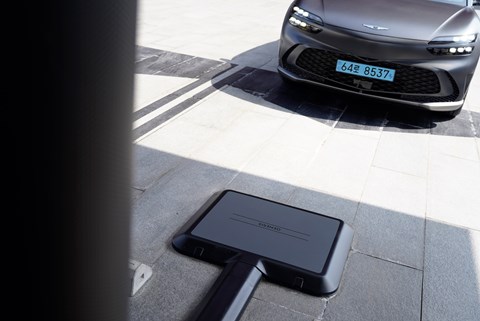
CAR has experienced a demonstration of this technology at the brand’s Suji studio in Seoul, using a GV60 with the technology applied. Much like BMW’s trial a few years back, GV60 models have not only been given their own pads to wirelessly charge, but the parking-based software in order to guide the driver over the pad. You can even activate the charge without leaving the car.

However, Genesis head of product, Marc Choi, wasn’t quite convinced the technology was ready for public rollout just yet. ‘The intention was to expand into a public-purchased product but we felt that, without meeting government regulation, we didn’t want to introduce a half-complete product into the market,’ he says. ‘One of the key things we want to focus on is the speed; we’re currently maxing out at 11kW, which we feel is too slow, so we want to wait until it becomes faster for it to be mass adopted.’ An interesting perspective, given Volvo’s trial (below) can reach speeds of 40kW already.
Even so, other car manufacturers are investigating the viability of the technology.
Volvo and Cabonline: the 2022 trial
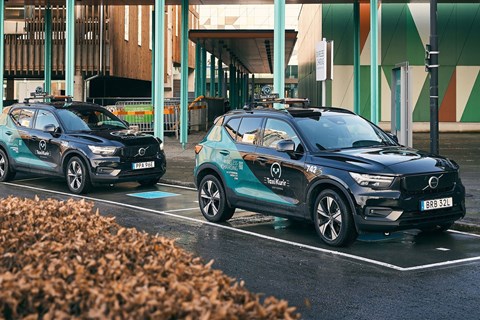
Volvo has launched a new wireless EV charging trial in Gothenburg. The company has allocated a small fleet of electric XC40s to Cabonline – the largest taxi operator in the Nordic region – who will use the cars and the wireless charging pads over the next three years to see how well the system works in the real world.
The system doesn’t require the car to be connected to a charging station via a cable. Drivers can charge their cars by simply parking over a pad, and the electricity is transferred to the battery pack via inductive charging in the same way as a wireless smartphone charger.
Volvo’s says its wireless EV charging system is almost four times quicker than an 11kW wired connection. At 40kW, in fact, speeds will be comparable to a wired 50kW DC rapid-charger, meaning the XC40 taxis should be able to charge from 20 to 80 percent capacity in just over an hour.
Okay. But is there anything similar closer to home?
Yes, actually. The city of Nottingham recently won a £3.4 million government grant for a similar scheme that would trial wireless car charging for the town’s taxis. The latest breed of range-extender cabs will be equipped with the wireless charging kit to make them compatible with charging pads dotted around the town.
Induction loops and will be installed at select Nottingham taxi ranks, with the idea being that cabbies could charge up while waiting for their fare, hence making the most of their up-time. To begin with, just 10 vehicles will be equipped with the hardware, but the trial could be extended if deemed successful.

The council hopes it will help reduce urban emissions, cut the tangle of roadside charging cables and accelerate the switch to electrification. The authority is aiming to be carbon neutral by 2028. Read on to understand how wireless car charging works.
Wireless car charging: an explainer
Electric vehicle (EV) range, and more specifically battery size, has developed into an arms race for car makers, with new electric cars coming in thick and fast with updated powertrains. Ultra-fast charging is edging its way onto the scene – just look at the Porsche Taycan, for example – but right now, the longer your range, the better. However, the real solution to range anxiety could have nothing to do with range at all; it could be solved by wireless charging.
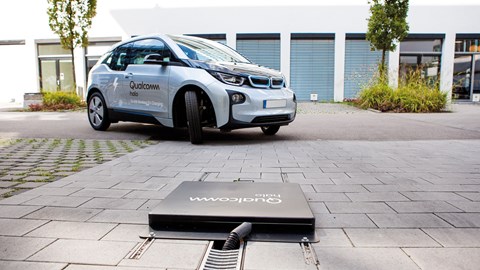
Yes, it’s a sideways step in terms of thinking, but a step forward in terms of ease of use. While we wait for incremental cell improvements and the possibility of solid state tech, companies such as Qualcomm believe wireless charging – similar to that in modern smartphones – is the magic bullet for range worries.
Further electric car reading
It’s not fast by any means, but that’s not the point. Rather than topping up quickly and less frequently, Qualcomm has bet EV charging behaviour will become a constant splash-and-dash process, with wireless charging being the ideal way to do it.
From garage floors that’ll charge your EV without you lifting a finger, to motorways that can power your car and propel it at the same time, wireless charging opens up a whole new approach to power management. And it might actually work.
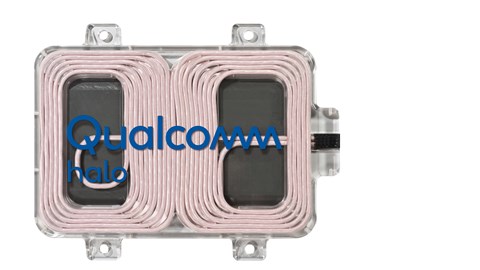
What is wireless car charging and how does it work?
If you’ve bought a high-end smartphone in the past few months, you’ll probably be familiar with wireless charging. Just like it sounds, it’s a simple way of putting charge into your phone without the need for cables – and Qualcomm’s Halo technology is essentially a scaled-up version.
It relies on resonant magnetic induction to transfer energy between a pad on the ground, and another under the floor of a compatible EV. The charging pad is around a metre square, while the car’s receiving pad is enclosed in a smaller, dinner dish-sized device under the car. Once the two are aligned, charging can take place at 3.3kW, 6.6kW or 20kW speeds.
Our guide to electric car batteries and tech
Does it actually work? We tested it to find out
Two versions of Qualcomm’s Halo tech are currently fitted to the Formula E Safety Car and Medical car: a constantly developed one on the former, and an early beta version on the latter, just to test the effect of wear and tear.
At the ePrix in Paris, CAR magazine was shown just how Qualcomm’s wireless charging system works, and it’s actually pretty simple for the user; a smartphone app complete with intuitive graphics made it easy to align both pads. They must be lined up for the system to work.
It’s worth mentioning here that while we may see the technology in other cars, it’ll probably be contained in OEM apps or infotainment systems wearing the brand of the manufacturer. This Qualcomm demonstration is what’s currently being shown to car makers, and it’d then be customised and reskinned later down the development process.
After alignment was complete, charging began once the ignition was switched off. While 20kW isn’t as fast as the ridiculous rapid-charge speeds Porsche, Audi, Tesla and others are quoting, it’s important to remember the use case here is completely different.
Qualcomm’s Halo tech also comes with some built-in safety features, so if any foreign objects are located between the charging pads, the system will shut off automatically. At that point, the EV owner would be contacted, and asked to secure the connection.
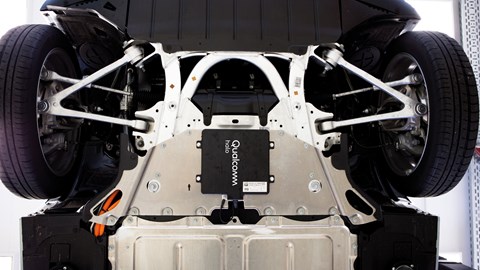
When is wireless car charging coming?
Qualcomm is using Formula E to develop and advertise its wireless charging tech, but it’ll be a couple of years before you see Halo on your EV’s spec sheet. Qualcomm licenses the technology instead of manufacturing it, but recent tier two wins mean it should be entering the market via OEMs in around 18 to 24 months from now.
BMW will begin building its world-first production-ready inductive charging systems in July 2018 – and it’s set to work with many of the firm’s plug-in hybrid models (PHEVs). It’ll consist of two parts – a Groundpad and a Carpad in BMW parlance – with the former sitting on the ground below your plug-in hybrid and the latter connecting to the car’s electrical backbone. BMW claims a 3.5-hour charge is possible with a charge rate of ‘up to 3.2kW’, and at around 85% efficiency between the pad and the car.
There’s no indication yet when the tech hits UK BMW showrooms at this point, or indeed how much it’ll cost until market-specific details arrive; we’re told before the end of summer 2018. But BMW sources told CAR magazine that the tech is indeed headed for right-hand drive markets, and will be available exclusively on a leasing deal with a 5-series 530e iPerformance.
The reason behind the leasing stipulation is a simple matter of economics – the overwhelming majority of plug-in 5-ers in Western Europe are ‘owned’ this way, so it stands to reason that the best way of introducing this relatively expensive range anxiety-busting tech is to use the same financing model for this.
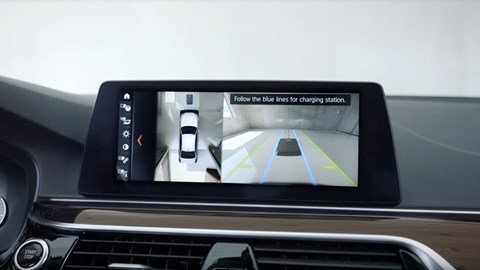
And after that?
While static wireless charging is the main aim, Qualcomm is already looking to develop the technology further for moving vehicles too – and that’s where things get even more interesting. Dynamic charging, or charging while in motion, is the next step, and could change how we see EV batteries forever.
If a wireless charging infrastructure is able to provide a constant stream of power to an EV, a large battery wouldn’t be needed for most journeys – just a small one for patchier infrastructure. Qualcomm believes quick charging could still be used, though, and the future will probably see a combination of both rapid wired and wireless charging for EV owners.
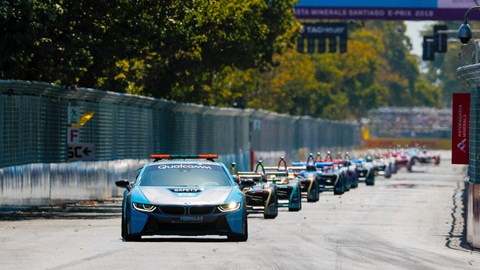
Dynamic wireless charging tech would probably be easier to implement in urban areas first, so EVs would only need batteries for intercity journeys – where larger quick charging stations are already planned.
We’ll keep updating this article when there are more developments on wireless charging tech in the automotive field.